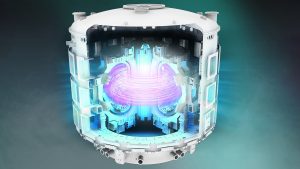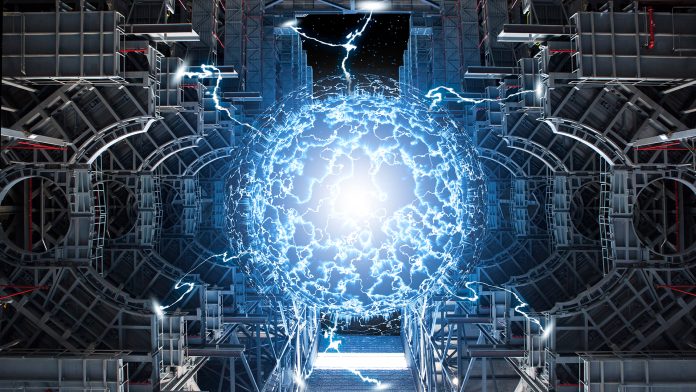Massimo Garribba, Deputy Director-General responsible for the co-ordination of EURATOM policies in the Directorate-General for Energy at the European Commission, details Europe’s journey towards the realisation of fusion energy.
As Europe works towards achieving net zero targets and sustainability goals, could fusion – powering the sun and stars – be the energy of the future?
With a long history in fusion science and technology, Europe is well positioned as a leader in the journey to fusion commercialisation. Most notably, Europe is home to one of the most ambitious energy projects in the world – ITER, located in southern France. ITER is a major international collaboration working to build the world’s largest tokamak – an experimental machine designed to validate the scientific and engineering viability of fusion energy. ITER Members will then be able to be design their prototype or demonstration power plants on the basis of ITER construction experience, technological and scientific results. This will further drive the transition from a scientific experiment to fusion commercialisation.
The EU also co-funds EUROfusion consortium through the Horizon Europe Euratom Research and Training Programme. Via this consortium, European fusion laboratories collaborate to further advance the fusion research, design and manufacture systems that are necessary for the future fusion reactors.
To find out more about Europe’s fusion activities, The Innovation Platform spoke to Massimo Garribba, Deputy Director-General responsible for the co-ordination of EURATOM policies, Directorate-General for Energy, European Commission.
Can you elaborate on the current state of fusion in the EU?
The European Union (EU) considers fusion has the potential to provide a safe, cost-efficient and sustainable solution to European and global energy needs in the future. For this reason, the EU has supported for decades cutting-edge research and innovation, with the goal of developing fusion power plants for electricity production for a greener and more sustainable energy mix.
The EU is part of one of the most ambitious energy projects in the world – ITER. Located in the south of France, ITER is a unique project to build the world’s largest and most advanced fusion machine – a tokamak. Once completed, ITER will be approximately 30m high and 30m wide, weighing 23,000 tonnes. It aims to prove the technical and scientific feasibility of using the fusion process for electricity production. Tokamaks are vacuum-chambered devices designed to replicate on Earth the process of fusion – the energy source of the sun and stars – using a powerful magnetic field generated by superconducting magnets.
Beyond ITER, the EU collaborates with Japan on fusion activities under the Broader Approach Agreement. This privileged partnership oversees the development of key infrastructures, such as a test facility for fusion materials (The International Fusion Materials Irradiation Facility / Engineering Design and Engineering Validation Activities – IFMIF-EVEDA). The materials to be used in fusion reactors will need to withstand immense temperature and neutron fluence generated during the fusion process. Under the same agreement, the EU and Japan have jointly built a tokamak device known as JT-60SA. This device, located in Naka, Japan, is currently the largest operational superconducting tokamak in the world, after its inauguration in December 2023. JT-60SA was designed to support the operation of ITER by providing a complementary research and development programme.
Recently, Spain and Croatia have teamed up to lead the development of the International Fusion Materials Irradiation Facility – Demo Oriented Neutron Source (IFMIF-DONES), which is being constructed in Spain. IFMIF-DONES builds on the results of IFMIF-EVEDA and will provide a neutron source essential for further testing and validating materials that will be used in future fusion power plants.
The EU has also been supporting research in national fusion laboratories and universities, such as the Joint European Torus (JET) in the UK and the Wendelstein 7-X stellarator in Germany. Now, we are looking into opportunities to support joint initiatives between the private and public sectors. For instance, the European Innovation Council has recently awarded a €2.5m grant to a fusion start-up to support progress on the design of its stellarator and the integration of key stellarator components. We are encouraging EU fusion start-ups to work and co-operate with EU fusion laboratories, but also with industrial partners who are part of the current ITER supply chain.
How can findings from major European fusion activities and organisations such as JET, EUROfusion and ITER inform the future direction of European fusion development?
Fusion development is a long-term endeavour that requires sustained efforts across various initiatives, including the ones you mentioned.
ITER is one of the most complex machines ever to be constructed. It is meant to establish a demonstration fusion power plant and there are no shortcuts on this path. ITER will help demonstrate the feasibility of technologies needed for a fusion power plant, bridging the gap between today’s smaller-scale experimental fusion devices and the future demonstration of fusion power plants. Through ITER, scientists will be able to study plasmas under conditions similar to those expected in a future power plant and test essential technologies such as heating, control, diagnostics, cryogenics, and remote maintenance. Moreover, ITER will provide a unique opportunity to test, under real fusion conditions, the production of one of the fusion fuels for future fusion reactors: tritium.

In other words, ITER operations and the results of its research and experiments in the production of tritium and construction materials for fusion machines are necessary steps for the EU to transition fusion energy from research to demonstration reactors.
The findings from major European fusion activities, such as JET and EUROfusion, play a crucial role in informing the future of European fusion development. The JET machine concluded its operational journey on 18 December 2023, over four decades after its inception. It has been fundamental in laying the groundwork for ITER and future fusion power plants through its innovative deuterium-tritium experiments. JET also played a key role in training several generations of fusion scientists and engineers across Europe.
EUROfusion – a consortium of around 30 national fusion research laboratories across the EU – conducts fusion research under the Euratom Research and Training Programme. This focuses on the development of key fusion-related technologies, advancing training and education, and the development of the conceptual design of a future demonstration fusion power reactor (DEMO). EUROfusion’s co-ordinated efforts continue to drive progress in critical technologies while fostering new generations of fusion experts.
The collective knowledge obtained from all these different initiatives (e.g. on plasma behaviour, fusion materials, operational challenges, etc.), will shape the future course of European fusion development. Co-ordinated research efforts will help the EU transition from research to industrialisation, paving the way for the development and operation of commercial fusion power plants.
What are the main bottlenecks preventing fusion energy from being fully realised? How can these be removed?
There are a series of key technological bottlenecks related to the demonstration of critical technologies of future fusion reactors. For example, the qualification of materials that can withstand the extreme conditions within fusion reactors, or the demonstration of key components’ performance under reactor conditions. The development of plasma scenarios and the remote maintenance design and qualification remain significant challenges as well.
Another important bottleneck is the demonstration of tritium production within the reactor for fuel self-sufficiency. Fusion reactors rely on tritium, which is scarce in nature. Therefore, future commercial power plants will need to ‘breed’ their own tritium for economic viability. Breeding blanket concepts are being developed, and will need to be tested, to produce tritium fuel directly during the fusion reaction.
Addressing these challenges is crucial for fusion to transition from experimental reactors to a reliable and sustainable energy source. This can be achieved by the fusion industry and research institutions complementing their knowledge and helping to close the technological gaps affecting the path to fusion energy generation.
What is needed to enable fusion research and technology to flourish in Europe?
Several key actions are required to support the growth and development of fusion research and technology.
Firstly, we need to secure continued and sufficient commitment of financial, technical, and human resources to complete the ITER project. Despite the challenges the project is facing and the rise of private investment in multiple fusion machine designs, ITER remains not only highly relevant, but in fact the centrepiece of global efforts towards the commercialisation of fusion energy.
Secondly, an appropriate fusion-specific regulatory framework will also facilitate the deployment of fusion technologies. In this regard, the European Commission has launched a dialogue with the European nuclear safety authorities in the European Nuclear Safety Regulators Group on possible regulatory approaches to fusion facilities.
Thirdly, as indicated in Draghi’s latest report on the future of European competitiveness, we need to create ‘a stable and predictable fusion ecosystem for industrial innovation, leveraging the ITER project, while ensuring a clear technology development roadmap.’ A coherent EU-level approach should be adopted to facilitate research and technology innovation, incentivise private sector engagement, de-risk investments when necessary, and create the environment where private companies and publicly funded research organisations work hand in hand towards a common goal – bringing fusion energy to the grids.
Finally, once the first commercial power plants are built, there will be a massive industrial effort required to scale up production. Therefore, we will need to support the EU utilities and supply chain industry to be well positioned – either as fusion energy deployers or as key suppliers to leading commercial fusion projects.
How close do you think Europe is to fusion commercialisation?
We are seeing several private initiatives working to achieve electricity production with ambitious timelines. Some of them have announced that they will demonstrate significant progress within the next five years, aiming for a technology readiness level (TRL) of 4 or 5 and potential net energy gain or high-power multiplication. These companies plan to complete a pilot plant between 2030 and the mid-2030s. The success of these plants depends on the performance of the upcoming devices, securing further funding, and resolving design, engineering, procurement, and construction issues. We also need to recognise important differences between public and private approaches to fusion technology development: Public initiatives, like ITER, aim to develop the entire fusion system, including fusion-enabling technologies such as blanket breeding and tritium technologies. While it may require more time, this comprehensive approach addresses long-term issues critical to the future commercial deployment of fusion power plants.
It’s hard to predict an exact timing, but we can realistically expect to still have some decades of work ahead of us before achieving fusion commercialisation. Although, there’s always hope for a breakthrough or major discovery in the meantime.
What is important to keep in mind is that the benefits of having fusion energy as a part of the future energy mix are worth pursuing and we remain committed to making fusion energy a reality as fast as possible.
Please note, this article will also appear in the 20th edition of our quarterly publication.







